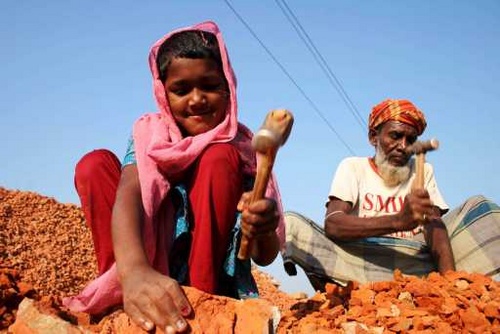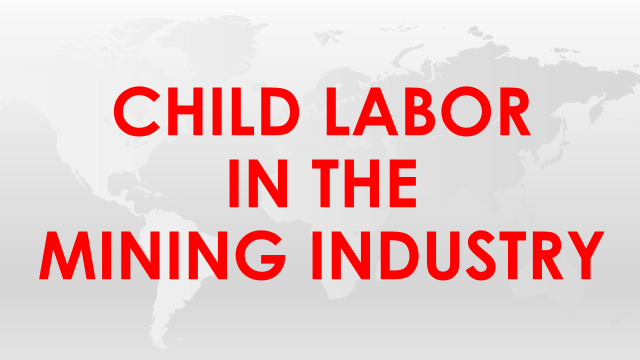Water
 Last week, a giant trash collection device left San Francisco and headed for the Great Pacific Garbage Patch – a floating mass of garbage the size of Texas. The device, developed by The Ocean Cleanup, is a floating boom with a screen that collects garbage while letting marine life swim safely away. Click here to watch a video about this bold new project! Click here to find out what you can do to end plastic pollution!
Last week, a giant trash collection device left San Francisco and headed for the Great Pacific Garbage Patch – a floating mass of garbage the size of Texas. The device, developed by The Ocean Cleanup, is a floating boom with a screen that collects garbage while letting marine life swim safely away. Click here to watch a video about this bold new project! Click here to find out what you can do to end plastic pollution!
Immigration
Who Is My Neighbor In A Climate-Threatened World?
Every October 4th, the Feast of St. Francis celebrates the saint who saw all created beings as his brother or sister. Inspired by this example, Catholic Climate Covenant produces a free educational program to help your faith community explore how it can better care for creation and the poor. This year’s program, “Who Is My Neighbor In A Climate-Threatened World?” focuses on the interconnections between immigration, refugees, and climate change. The program is 90 minutes and can be downloaded – free – by clicking the link above. Please consider participating in this program with your local community!
(Human) Trafficking

Over the next few months, the human trafficking committee will be highlighting the pervasiveness of child labor by raising awareness about various industries where the practice is prevalent. Please see below for this month’s topic: Child Labor in the Mining Industry, by Sister Joan Pikiell, and make sure to read and watch our office’s latest social justice resource, “Child Labor, Illiteracy, and Poverty: A Tragic Cycle,” to learn more about the systemic use of child labor and what you can do to prevent it!
 Haiti
Haiti
- In case you missed it, please watch the recording of our recent Haiti webinar, and read our Haiti Initiatives report to learn about our efforts to provide water catchment systems and training to the people of Lagonav, Haiti.
- Haitian-Japanese tennis star Naomi Osaka won the U.S. Open against Serena Williams last week! Click here to learn more about the tennis star, who is proud to represent her Haitian and Japanese heritage.

Child Labor
By Sister Joan Pikiell
Millions of children work to help their families in ways that are neither harmful nor exploitative. However, UNICEF estimates that around 150 million children aged 5-14 in developing countries, about 16% of all children in this age group, are involved in harmful child labor.
UNICEF classifies child laborers as those either too young to work or involved in hazardous activities that may compromise their physical, mental, social, or educational development.
The prevalence of child labor is highest in sub-Saharan Africa. In the least developed countries, around one in four children (ages 5 to 17) are engaged in labor that is considered detrimental to their health and development.
Children are used for coal mining, because their small stature makes them “perfect” for the small, narrow tunnels. These children also suffer from the risk of tunnels collapsing and poisoning from methane gas build-up.
Gems and precious metals are also mined using child labor. In Ghana’s gold mines, thousands of children risk brain damages from exposure to the mercury used the process.
Spinal damage, respiratory disease, and injuries from mine collapse and sharp tools are also common consequences. Children are susceptible to these same dangers when mining for silver in Bolivia, sapphires in Madagascar, diamonds in Angola, or rubies in Tanzania, Kenya, or Vietnam.
Another industry that utilizes child labor is rock mining. In Sierra Leone, for example, children break granite rocks into gravel. The gravel is used in construction to make cement.
An industrious rock crusher can fill about 10 skillet sized pans per week at 30 U.S. cents per pan. Gravel mining is a hopeless existence with no prospects for improvement. It’s also dangerous as children often miss the rocks and hammer their toes or shins. Often gravel shards hit their eyes and cut their faces.
This summer, the world watched prayerfully for an international rescue team to come to the aid of 12 soccer players aged 11-16 stuck in a cave for 18 days. Imagine what could be accomplished if this type of international humanitarian effort went into addressing the needs of children stuck every day, for years on end, as child laborers in the mining industry.
Click on the following Links for more information
UNICEF
